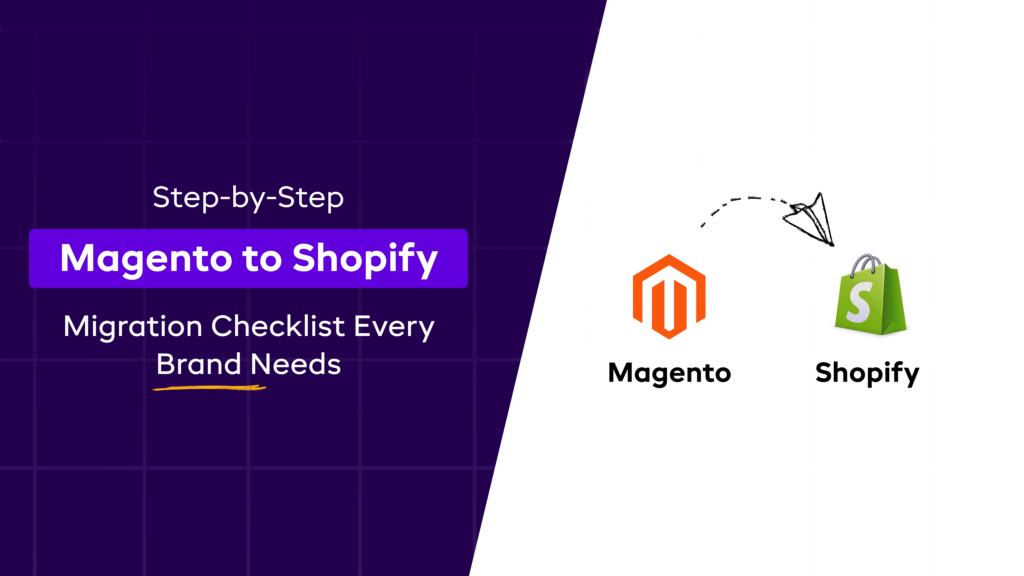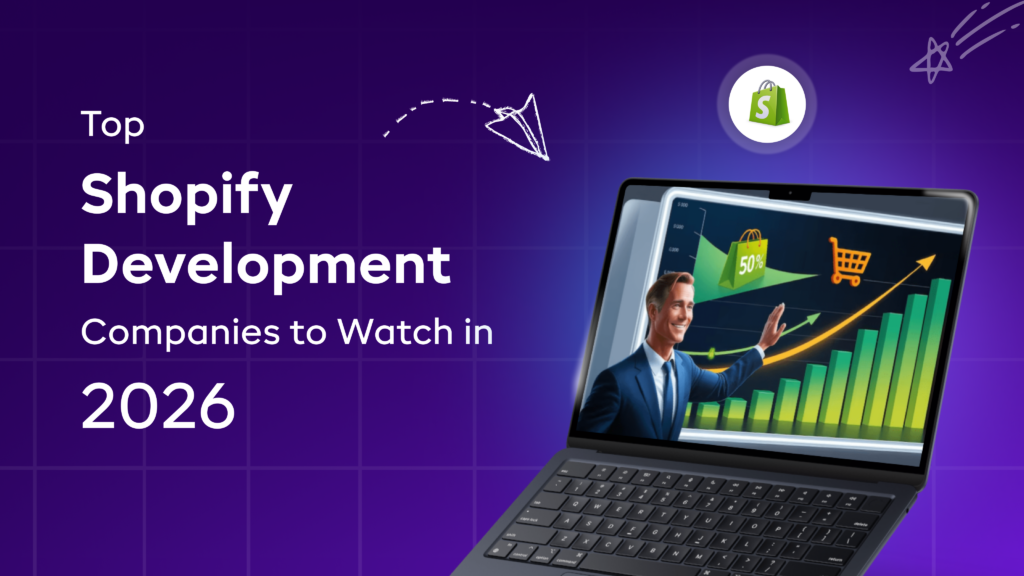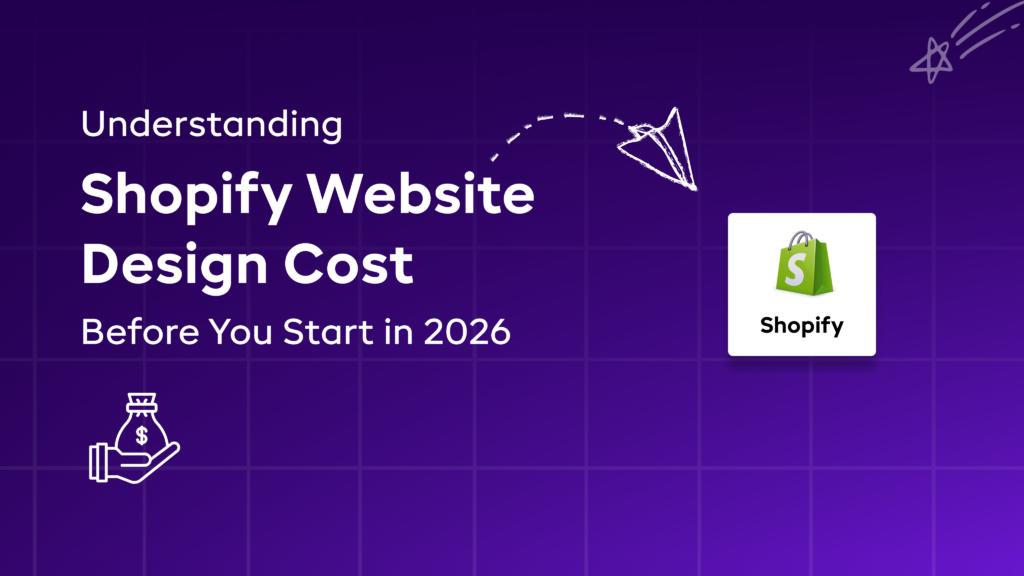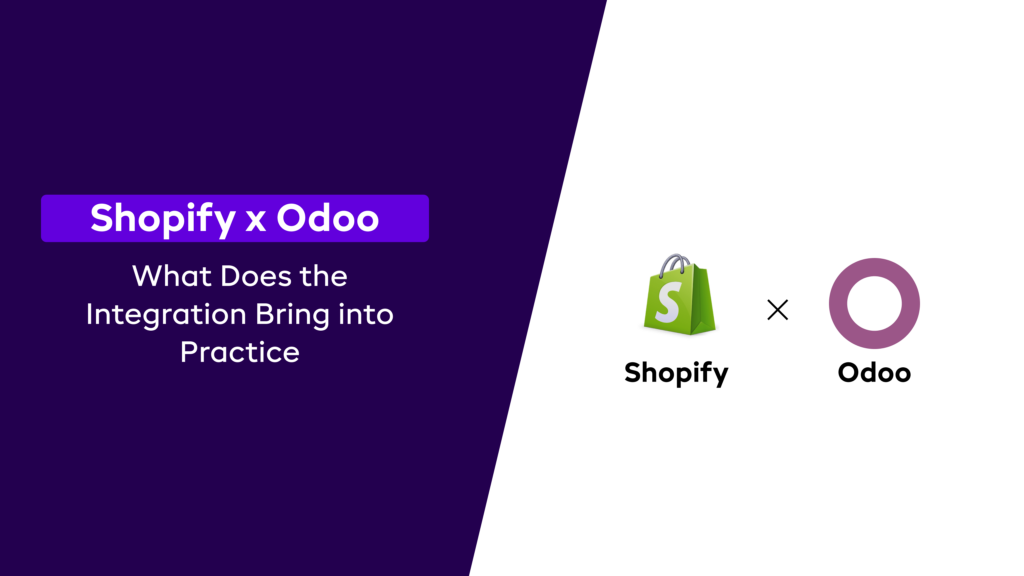Step-by-Step Magento to Shopify Migration Checklist Every Brand Needs
Published on October 27th 2025

Introduction
Planning to migrate from Magento to Shopify?
Congratulations on your first move.
If you’re reading this, you’re likely to have reasons for switching.
Brands migrate for specific reasons; for example, a Deloitte survey discovered that 67% of merchants identified persistent challenges with obsolete platforms as a major driver for investing in new eCommerce solutions.
Besides, moving from Magento to Shopify adds to brands in more ways than one. It allows business owners to tap into:
- Scalability and performance: Shopify's strong infrastructure is designed to support expansion.
- Ease of Use:Shopify is known for its user-friendly interface. It enables your team to manage goods and marketing without requiring a coder for small changes.
- The App Ecosystem: With thousands of apps, you can create a world-class technology stack.
Magento has its pros and cons, but Shopify is a tempting option for businesses seeking simplicity, support, and scalability.
Want to know the key reasons behind this move? Read our detailed guide on Why Should One Migrate from Magento to Shopify?
This blog takes a closer look at the different steps involved in migrating from Magento to Shopify. Continue reading to learn more about it in the following sections.
Your Step-by-Step Magento to Shopify Migration Checklist
To properly integrate Magento with Shopify, you need to follow a detailed checklist that includes the following:
- Pre-Migration Preparation
- Shopify store setup
- Data Migration
- Integration
- Testing Store Functionality
- Post-Migration Activities
Let’s have a closer look at this eight-step migration checklist in this section.
Stage I - Define your migration goals
Do you plan to increase website performance, simplify store administration, save operating expenses, or improve your consumers' purchasing experience?
Perhaps your goal is to employ Shopify's user-friendly features and numerous integrations to boost sales growth.
Knowing what you want to achieve serves as the foundation for all of your decisions throughout the process.
Once you’ve listed the migration goals, it becomes easier to gain direction around what you want from your Shopify store. For example, you may prioritize increased mobile responsiveness, shorter load times, or more straightforward customization.
Defining your goals will help you lock in the features and functionality of the store, delivering and keeping you ahead of competitors from the start.
Learn how to align your migration goals with business growth strategies in How to Grow Your Business with Shopify Development Services.
Stage II - Review products, customer data, and other content
As you prepare for your Magento to Shopify conversion, create a precise list of everything you intend to transfer. This encompasses all product categories, specific products, customer information, order history, and other relevant details.
Note down your data transmission needs.
Review your existing catalog and note any relevant goods, categories, and variations that should be added to it. You'll want to move some of the following data:
- Products
- Store Credit
- Customers
- Order History
- Gift Cards
- Certificates
- Blogs and pages
Do the same with client profiles; ensure that all relevant data, such as contact information and purchase history, is readily available for transfer. Review previous orders as well, since they may provide useful information for reporting or customer support.
Stage III - Perform the data mapping
In the third stage, adapt your existing Magento shop data to Shopify's basic data fields.
Wonder why? Because both Magento and Shopify structures are entirely different, their data structures are also different. As a result, it is typical to see Magento fields with different names in Shopify, as well as fields that are missing altogether.
Examine the existing data fields of your store, as well as the data fields for items, customers, and other relevant entities.
Here you may discover the data structure for Shopify's items and customers. If you cannot locate a specific field within Shopify's structure, you must plan how you will transfer data (via metafields or another method).
This mapping procedure ensures that all critical information is transmitted accurately and functions within Shopify's architecture.
Stage IV - Identify top-performing areas and problem points
Before switching to Shopify, it's essential to understand what's working well in your Magento store and what isn't.
This stage enables you to retain and enhance effective features while addressing issues that may be hindering your new store's performance.
Examine your store's data to see which pages, goods, or campaigns generate the most traffic and conversions.
- What are your top-selling products?
- Which pages or categories receive the most traffic?
Pay attention to consumer behavior, such as popular search phrases or frequently visited sites, and prioritize implementing these insights on Shopify. On the other hand, look at areas where you may be losing sales or causing consumer friction.
- Are there pages with a high bounce rate?
- Do consumers often leave their carts at the checkout?
- Are certain items underperforming despite high traffic?
- Is your mobile experience ideal, or do you have a cumbersome navigation experience?
Listing these pain areas will help you plan adjustments to your Shopify setup, such as adopting faster themes, adding better checkout tools, or rearranging your navigation menu.
Stage V - Remove outdated or incorrect data for easier transfer
Once you understand the top areas, it’s time to decide what is worth retaining, what needs to be updated, and what can be left behind.
Are all of the goods up to date? Check for out-of-date goods, duplication, and inaccurate information.
Look for existing products.
Do you have any products in your catalog that are discontinued, out of stock forever, or no longer relevant? Ensure that each product has accurate descriptions, prices, and high-quality photos that meet Shopify's recommended sizes.
Is your client data clean?
Next, pay attention to client data. Your client database is vital, but it only serves a purpose if it is correct. Clean, structured data makes migration easier and improves your ability to give tailored experiences on Shopify.
Look for the miscellaneous items
Don't forget to include additional materials, such as blog posts, pages, and SEO metadata, to enhance your content. Examine these materials to determine what is still relevant and valuable to your audience.
Stage VI - Create a secure backup of all store data
While Shopify provides powerful data migration capabilities, it's always a good idea to have your own backup plan in place. A comprehensive backup allows you to restore data if something goes wrong during the move.
Begin by backing up all your important files, including product data, customer information, purchase history, and any relevant photographs or marketing materials. This also includes any themes, modifications, or third-party integrations you've put up in Magento.
Don't forget about your website's configuration and settings. These might include your payment gateways, shipping choices, tax settings, and any custom code or design features you've added to your Magento store. Keep track of this information so you can simply recreate the settings in Shopify.
It's also a good idea to test your backup before proceeding. Make sure you have access to the files and that all data is intact.
Stage VII - Pick a Shopify plan that fits your store’s needs
Have you decided which Shopify plan you want for your newly moved eCommerce store? If not, here we go...
Shopify offers a range of programs, each tailored to varying degrees of business needs.
The first thing to evaluate is the size of your shop and its potential for expansion.
For smaller enterprises, Shopify's basic plan may be sufficient; but, as your store expands and your product options expand, you may want more sophisticated capabilities.
If you rely heavily on comprehensive reporting and analytics to track sales and customer activity, Shopify's Plus plan may be the best fit. These higher-tier subscriptions also include enhanced support, stronger integration options, and more comprehensive eCommerce capabilities.
Stage VIII - Create a Shopify store with a decided plan
Now that you've chosen the best Shopify plan for your company, it's time to launch your store formally. Signing up with Shopify is simple; just follow the setup instructions after selecting a plan. You will need to enter basic information such as your store name, email address, and business details.
Once you've built your online store, Shopify will walk you through the process of customizing it and adding items. Setting up a Shopify store is relatively simple. The platform offers a wide range of themes, both free and premium, that you can explore and test.
When choosing a theme, consider your target demographic and the products or services you offer.
- User experience:Your theme should have a clear, easy-to-use design that represents your brand's identity. Consider things like your.
- Specialty:Consider specialty industries, product variety, brand identity, and mobile friendliness when selecting a theme for your website.
For a more technical walkthrough, explore our Magento to Shopify Migration Service Guide to see how experts handle the transition.
Once you've chosen a theme, install it and see how it appears. Shopify allows you to customize many features of the theme to make it your own, but choosing a theme that suits your brand's feel from the start will save you time in the long run.
Perks of Migrating to Shopify
Here are some of the reasons you'd choose Shopify over Magento.
A Easy to Use:
When it comes to an uncomplicated platform, Shopify is the greatest alternative. When utilizing Shopify, you don't need to know how to code.
B Availability of Themes:
When you use Shopify, you can utilize its fantastic themes. Depending on your business theme, you may select from Shopify's outstanding themes.
C Have Great Marketing Tools:
Marketing is crucial for every business, and Shopify is the only platform that offers exceptional tools to support the marketing process.
D Easy Payment Processes Available:
Shopify's payment processes are far easier than Magento's. Shopify makes it easy to collect money from customers.
Migrate with Confidence, Grow with Shopify
A successful migration is only meaningful if your new store performs better than before. That’s where Uncanny steps in.
We, at Uncanny, don’t just move your data — we help you build a future-ready Shopify store designed for performance, flexibility, and growth. Our end-to-end
Shopify development services ensure your store is visually stunning, functionally seamless, and optimized for conversions from day one.
Partner with Uncanny — where migration meets growth.
Want to start a project with us?
Empowering businesses to achieve greatness through strategic guidance and innovative solutions.
Book A Demo
FAQs
Q. What are the essential steps to migrate from Magento to Shopify without losing products or data?
Backup Magento data, export products and customers, use migration tools, import into Shopify, verify SEO redirects, and test performance thoroughly.
Q. What’s the timeline to migrate from Magento to Shopify?
The migration typically takes one to four weeks, depending on store size, customization level, data volume, and testing requirements.
Q. Do I need technical expertise to follow the Magento to Shopify migration checklist, or can beginners manage the process independently?
Beginners can handle it using guided checklists and apps, although technical knowledge is helpful for customization, SEO setup, and troubleshooting.
Q. Which tools or migration apps are most reliable for transferring Magento store data to Shopify?
Popular tools include LitExtension, Cart2Cart, and Matrixify, offering automated, secure data migration with mapping options and detailed reports.
Q. What post-migration tasks ensure smooth Shopify store performance?
Test redirects, validate URLs, optimize speed, review the checkout flow, reconfigure integrations, and monitor analytics to ensure stable Shopify performance.

About Author


